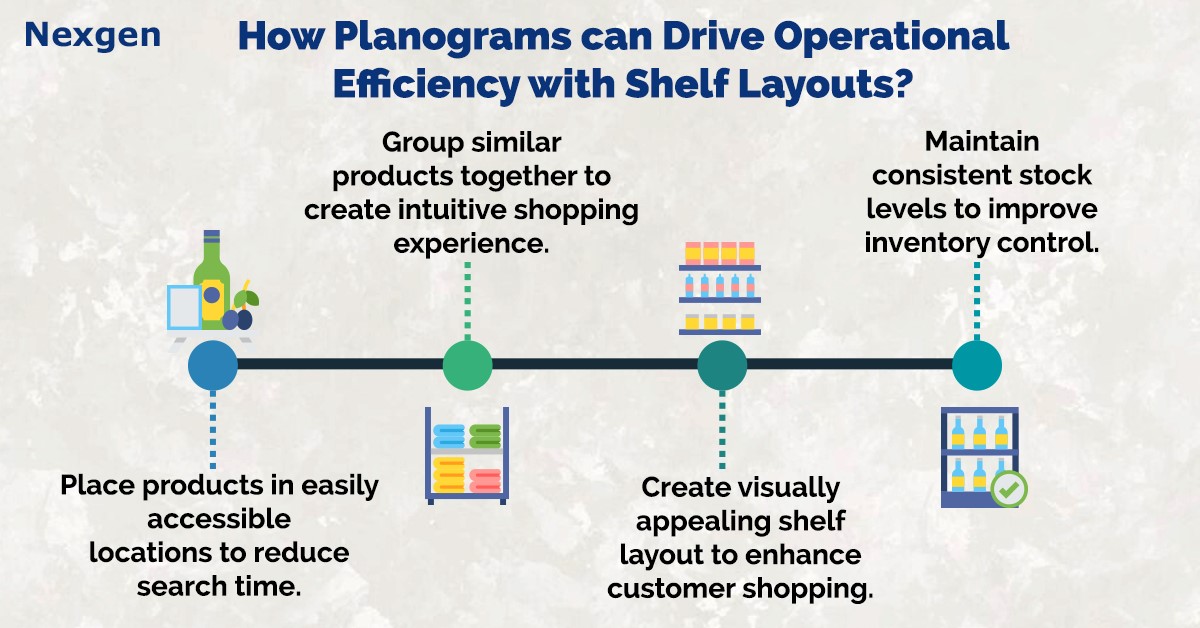In retail, every inch of shelf space matters. Effective shelf management can significantly impact a store's profitability, and this is where planograms come into play. Planograms, or shelf space planning, are schematic drawings or models that detail the placement of products on shelves. They are essential tools for driving operational efficiency and enhancing customer satisfaction. Planograms consider various factors, such as product size, shelf space, and consumer behavior. By strategically placing products, retailers can guide customers through the store, encourage impulse buys, and optimize the overall shopping experience. Following are some benefits of using planograms in retail:

Benefits of Using Planograms
- Maximized sales and profits: Planograms help retailers place high-margin products in prominent positions, ensuring they catch the customer's eye. By analyzing sales data and consumer behavior, retailers can identify the most effective product placements to boost sales and profits.
- Improved inventory management: A well-structured planogram ensures that products are stocked efficiently, reducing the chances of overstocking or understocking. This leads to better inventory control, minimizing wastage and ensuring that popular products are always available.
- Enhanced customer experience: Organized, and visually appealing shelves make it easier for customers to find what they need. Planograms help create a seamless shopping experience by grouping related products together and highlighting promotions, which can lead to increased customer satisfaction and loyalty.
- Consistent brand image: Planograms ensure that the brand’s image is consistently represented across all stores. This uniformity in product arrangement helps build brand recognition and trust among customers.
- Streamlined operations: Planograms provide clear guidelines for store staff, simplifying the stocking and restocking process. This reduces the time and effort required to organize shelves, allowing staff to focus on other important tasks.
Steps to Optimize Shelf Layouts with Planograms
- Analyze sales data: Begin by analyzing your sales data to understand which products are most popular and which ones are underperforming. Identify trends and patterns to make informed decisions about product placement.
- Understand customer behavior: Study customer behavior to determine how they navigate your store. Identify high-traffic areas and place high-margin or cross-merchandising items in these spots to increase visibility and sales.
- Categorize products: Group similar products together to create a logical and intuitive shopping experience. This not only makes it easier for customers to find products but also encourages them to explore related items.
- Consider shelf space: Optimize your shelf space by considering the size and packaging of products. Ensure that products on your store shelves are easily accessible and visible to customers. Use vertical space effectively to display more items without overcrowding the shelves.
- Regularly update planograms: Retail trends and customer preferences are constantly changing, so it is important to regularly update your planograms. Continuously monitor sales data and customer feedback to make necessary adjustments and keep your shelves optimized.
Overview of Nexgen POG
Nexgen POG is a robust and user-friendly cloud-based visual merchandising tool. It is designed for quick and efficient planogramming with minimal effort. Planogram in retail can be designed by easily dragging and dropping the products. The multi-device compatibility feature of POG allows you to obtain, share and edit planogram on any device, including your phone. It helps in designing store-specific planograms for increased product visibility and sales.
Get Your Free Trial Now!